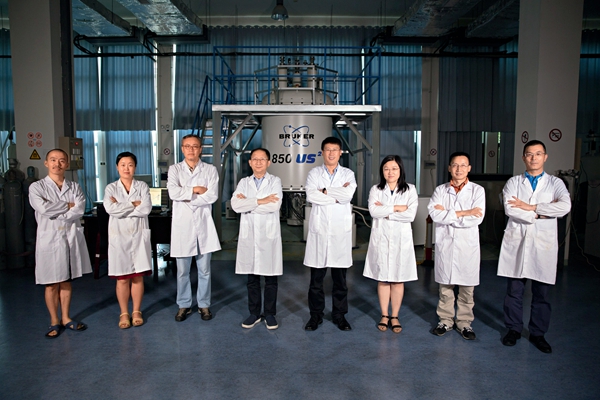Harvard Postdocs’ Entrepreneurial Dream Comes True
China Today by Ye Lefeng,January 19, 2018 Adjust font size:
Science Island, as it is known, is a 2.65-sq-km peninsula in the midst of the Dongpu Reservoir in northwest Hefei, capital of Anhui Province, and is the site of the Hefei Institute of Physical Science of the Chinese Academy of Sciences (CAS) and its 10 subordinate research institutes.
The star attraction of Science Island for the 2,400 top researchers from around the world who have come here is its “artificial sun,” or tokamak, an all-superconducting non-circular section nuclear fusion experiment facility that holds hydrogen plasma hotter than the core of the sun.

Wang Wenchao, Zhang Xin, Zhang Na, Wang Junfeng, Liu Qingsong, Liu Jing, Lin Wenchu, Ren Tao (from left to right) at the High Magnetic Field Science Center of the Hefei Institute of Physical Science of the Chinese Academy of Sciences.
No less groundbreaking is the island’s Steady High Magnetic Field Facility (SHMFF). High magnetic fields, like extremely low temperature and ultrahigh pressure, provide the extreme experimental environment vital for scientific research, and are consequently invaluable for scientific explorations. The results of 19 international magnetic field-related research projects have won Nobel Prizes since 1913. The SHMFF was installed on Science Island in May 2008, and has gradually become a world-class high magnetic field science center.
Eight post-doctoral fellows of Harvard Medical School have come to Science Island since 2009. They have been drawn by its state-of-the-art research facilities, and an environment conducive to fulfilling their scientific dreams. All have achieved success in their scientific endeavors.